




Understanding Motion: Types, Causes, and Everyday Examples
An object is in motion with reference to a point of origin. Every object in this universe is undergoing some kind of motion, it may be slow or fast but always going on. The basic particle that is the atom is also in a state of continuous motion. Any change observed in an object by comparing its current position to its original position with respect to a time frame is known as the motion of that object. For example, in a moving bus, the passengers are at rest and the bus is in motion, also the passengers can observe any person standing outside as not moving at all.
Moving Things
The movement of an object from one position to another with respect to a time frame is called motion. When movement happens along a straight line, it's called rectilinear motion. Moving of things, objects, living or nonliving things happen when there is a change in location or position, so whatever is in motion is moving around us whereas objects not moving are said to be at rest. A plane flying overhead, a boy kicking a ball, the blades of a fan and a person riding a bicycle are all examples of moving objects.
Types of Motion Examples
A book being moved, the air we breathe and our universe in constant motion all are examples of motion. An object which is moving fast and covers a longer distance compared to an object which is moving slowly in the same duration of time taken by both objects. Fast and slow motion is defined as the speed of an object, an object in fast motion covers a larger distance in a relatively lesser amount of time than an object moving in slow motion.
It's categorised by how some objects move in a different manner than the rest, according to the nature of the movement, and motion is broadly of three types:
Linear Motion: The particles or objects move from one point to another either in a straight line or follow a curved path, so it's dependent on the path; it's further sub-categorised as:
(i) Rectilinear Motion - The path is always a straight line.
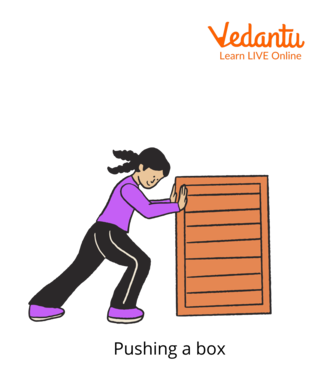
Rectilinear Motion
(ii) Curvilinear motion - The path is curved.
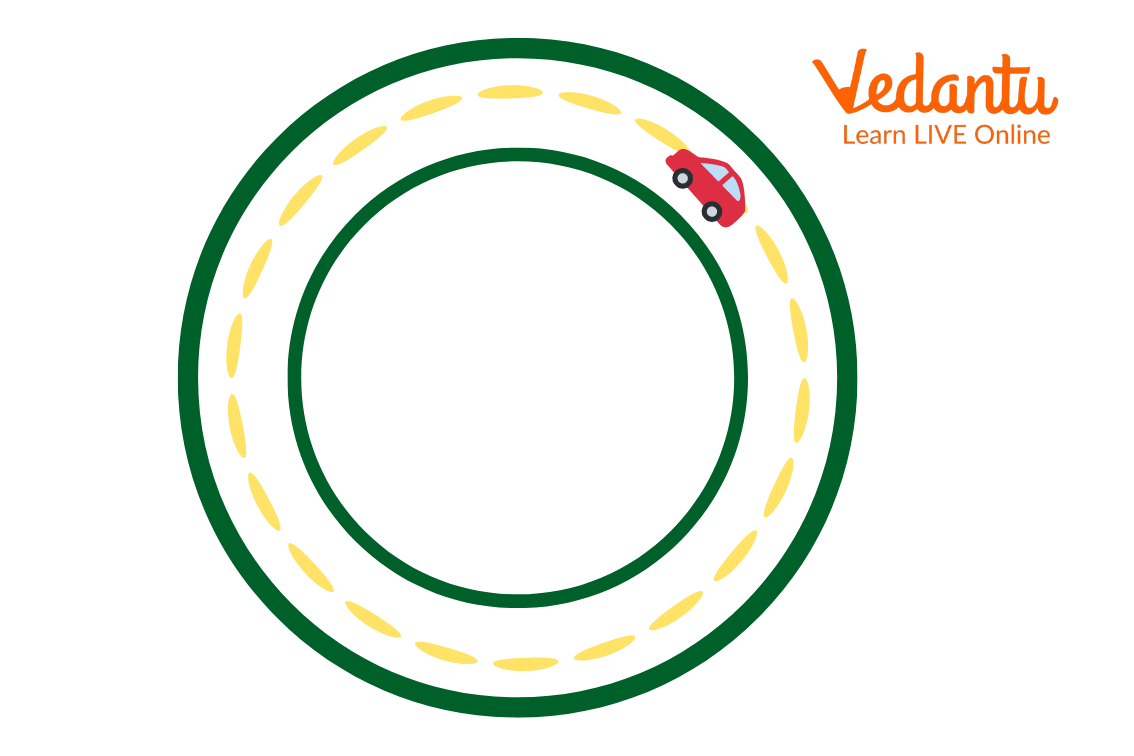
Curvilinear Motion
Rotatory Motion: This type of motion occurs when a body rotates on its axis. For example, the movement of the earth on its own axis around the Sun causes the days and nights. It's a revolution which causes the change of seasons. The movement of wheels of a car moves on their own axis.
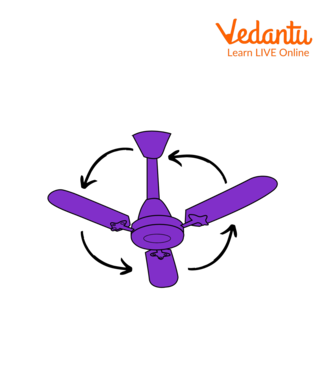
Rotatory Motion
Oscillatory Motion: It is a motion of an object about its mean position. An example is a child on a swing, the swing moves to and fro about its mean position. The pendulum of a clock has an oscillatory motion about its mean position. Another type of oscillatory motion is simple harmonic motion where a particle moves along a straight line with a defined acceleration and moves toward a fixed point on that line so that the magnitude is proportional to the distance from that point.
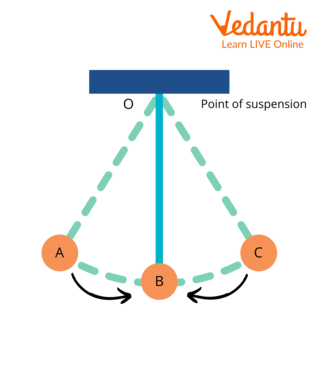
Oscillatory Motion
Another kind of motion is periodic motion which gets repeated after a certain period of time. Circular motion is the movement of an object in a circulatory path, it can be uniform and with constant speed and non-uniform with a changing rate of rotation. For example, merry-go-rounds in fairs, gears in a turbine and cars movement on a circular path.
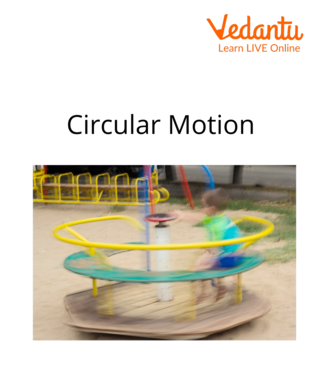
Circular Motion
Example of Object in Motion
There are certain factors that affect the motion in things around us. For example, if we consider a car in motion, then its velocity, friction and mass will have an effect on the motion of the car. We exhibit motion on a daily basis in our daily activities like walking, running, breathing as air is moving in and out of our lungs, eating food, writing, the motion of an automobile, the vibration of a string on a guitar, an athlete running on a track; all these are various examples of motion.
Interesting Facts
Motion is a phenomenon occurring subconsciously and involuntarily like the air we breathe is motion, the blood in our veins is motion, the earth is in constant motion and the universe is moving at a consistent pace all the time.
An object can be forever in an oscillatory motion in the absence of any type of friction but in reality, it's not possible as the object has to settle in some kind of equilibrium.
Key Features of Moving Things Around Us
Moving things also depend on a variable called position, if the object's position changes, for example, a passenger moves towards the rear end of a bus, and his position changes, this change in position is known as displacement.
A moving thing is only said to be moving if there is a change in its position and is in a definite direction.
The objects which do not change their position are said to be at rest and if any object around us moves with respect to a time frame it's said to be in motion.
FAQs on Moving Things Around Us Explained: Concepts, Examples & Uses
1. What is motion, and how can we tell if an object is at rest or moving?
Motion is the change in an object's position with respect to time and a reference point. We can tell an object is moving if its location changes compared to stationary objects around it, like a tree or a building. If its position does not change with respect to its surroundings, the object is considered to be at rest.
2. What are some common examples of moving things we see in our daily lives?
We are surrounded by objects in motion every day. Some common examples include:
- A car driving on a road
- The blades of a spinning ceiling fan
- A child swinging on a swing set
- A bird flying in the sky
- The hands of a wall clock moving
- A ball rolling on the ground
3. What are the main types of motion? Please explain with examples.
Based on the path taken by the object, motion is broadly classified into three main types:
- Rectilinear Motion: This is motion in a straight line. For example, a sprinter running on a 100m straight track or a fruit falling from a tree.
- Circular Motion: This is motion along a circular path. An example is the movement of a stone tied to a string and swung in a circle, or a point on the blade of a fan.
- Periodic Motion: This is a motion that repeats itself after a fixed interval of time. For instance, the to-and-fro movement of a pendulum or a child on a swing exhibits periodic motion.
4. Why is it important to use standard units for measurement, like metres, instead of hands or footsteps?
Using non-standard units like hand spans or footsteps can lead to confusion and incorrect measurements because their lengths vary from person to person. Standard units of measurement, such as the metre (m) and centimetre (cm), are fixed and the same for everyone, everywhere. This ensures that measurements are consistent, accurate, and reliable, which is crucial in science, construction, and daily life.
5. Can an object have more than one type of motion at the same time? Provide an example.
Yes, an object can exhibit multiple types of motion simultaneously. A classic example is a wheel of a moving bicycle. The wheel itself shows rotational motion as it spins around its central axle. At the same time, the entire wheel moves forward along the road, which is an example of rectilinear motion.
6. If a student is sitting inside a moving school bus, are they in motion or at rest?
This depends on the point of reference. The student is at rest with respect to the other passengers and the inside of the bus, as their position relative to the bus seat is not changing. However, the student is in motion with respect to a person standing on the roadside, because their position is changing relative to the ground. This shows that motion is always relative to an observer or a reference point.
7. What is the main difference between circular motion and rotational motion?
The key difference lies in the location of the axis of movement. In circular motion, an object moves along a circular path where the axis of motion is outside the object itself. For example, the Earth revolving around the Sun. In rotational motion, an object spins on an axis that passes through the object. For example, the Earth spinning on its own axis, which causes day and night.
























